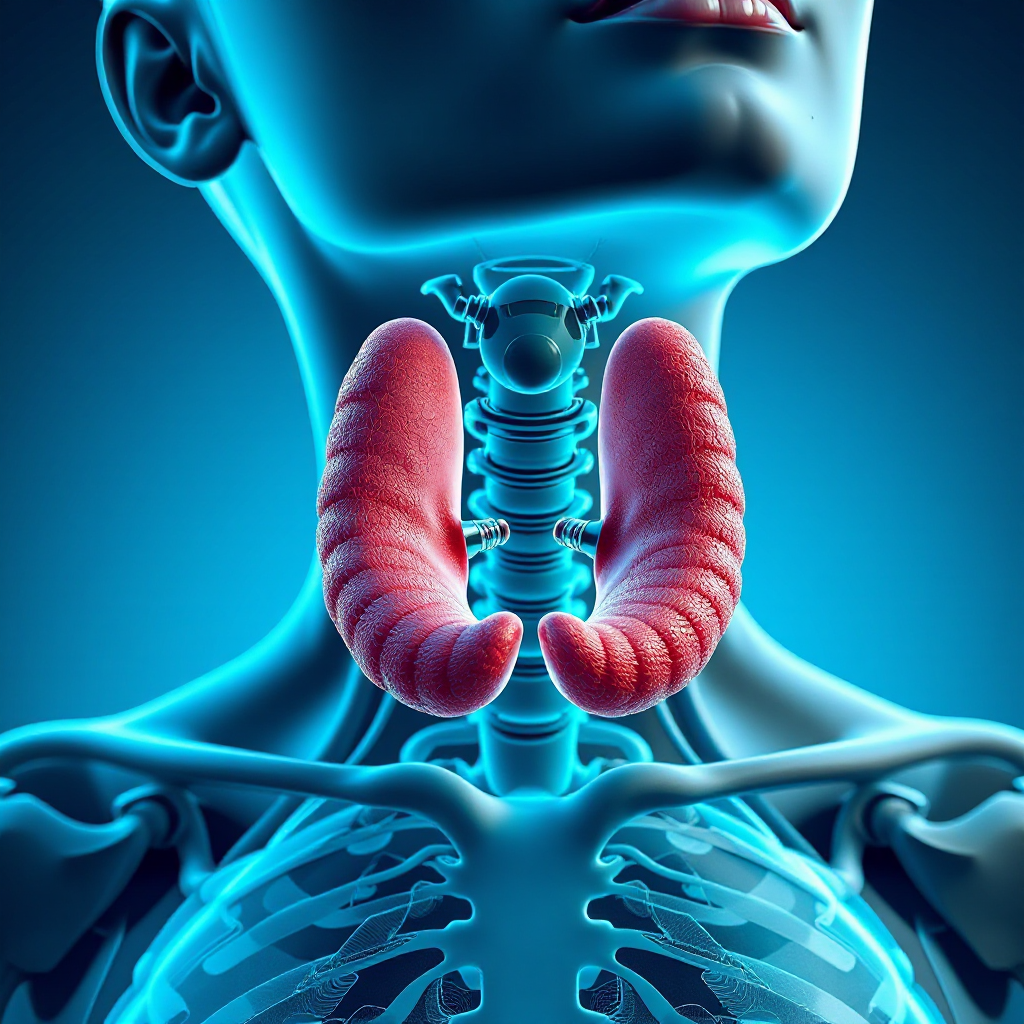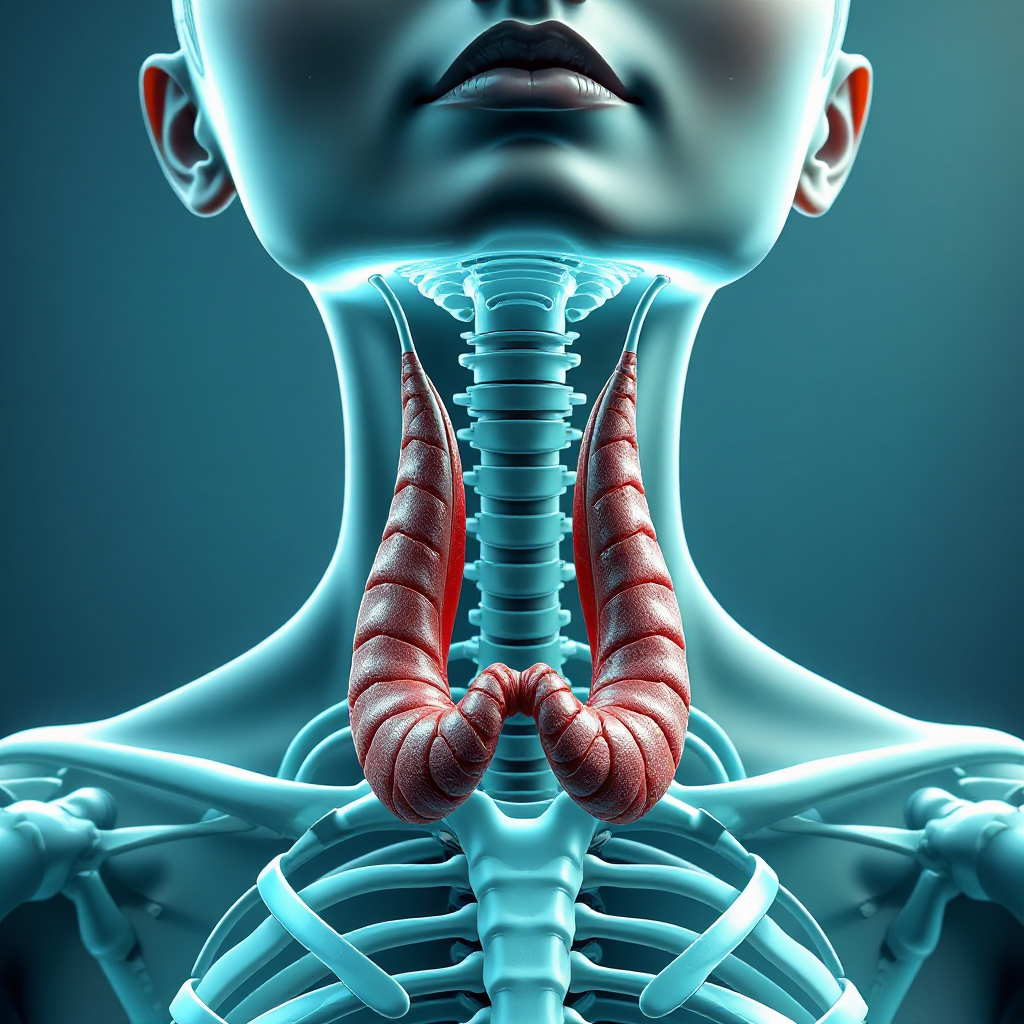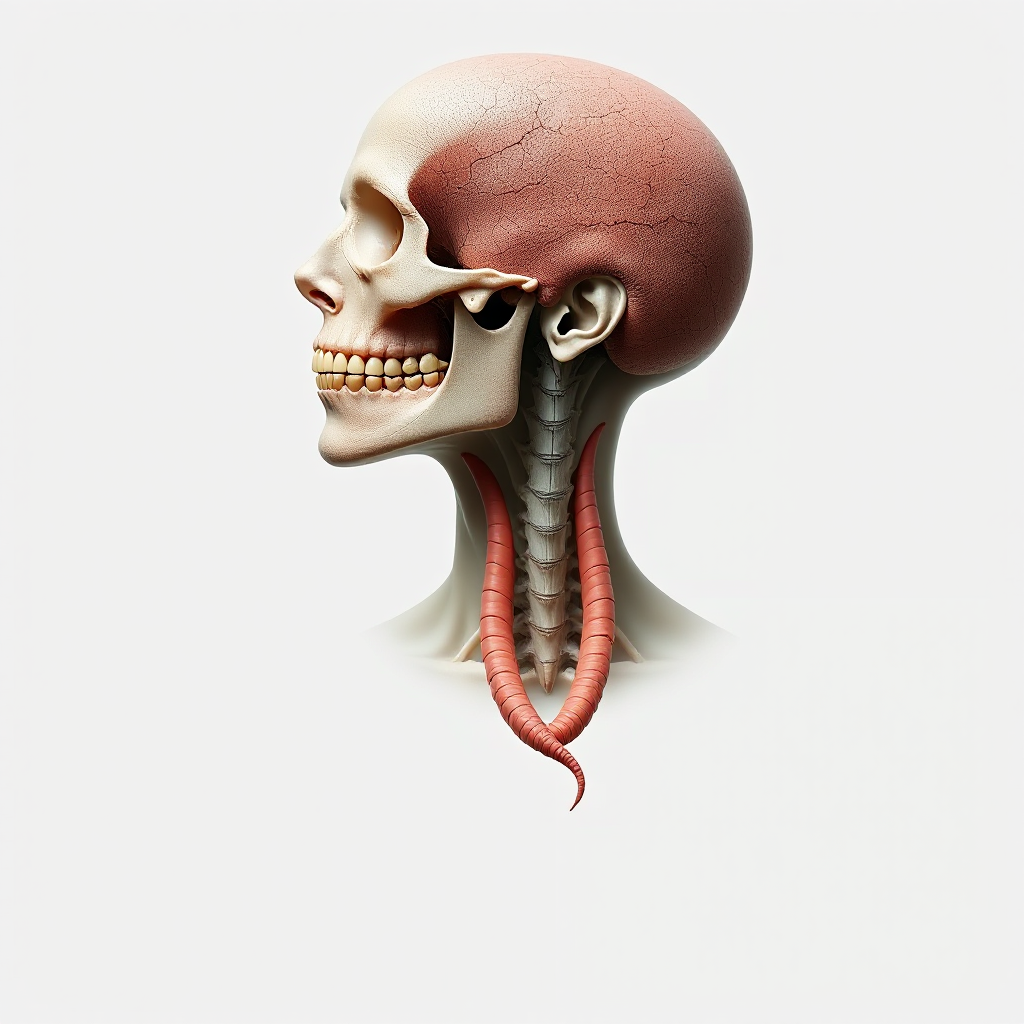What Causes Parathyroid Cancer and Its Symptoms?

Parathyroid cancer is one of the rarest cancers, affecting only about 0.005% of all cancer cases worldwide. This condition occurs when one of your parathyroid glands becomes cancerous, leading to excessive production of parathyroid hormone (PTH). As a result, calcium levels in your blood rise abnormally, causing hypercalcemia. You might experience symptoms like fatigue, bone pain, or kidney stones. While the exact cause remains unclear, genetic mutations and familial syndromes, such as Multiple Endocrine Neoplasia Type 1 (MEN1), may increase your risk.
Key Takeaways
Parathyroid cancer is very rare, making up only 0.005% of cancers. Finding it early helps improve treatment success.
Changes in certain genes, like the CDC73 gene, can raise the chance of getting parathyroid cancer. A family history of conditions like MEN1 also increases the risk.
Common signs include feeling very tired, bone pain, and kidney stones. These often happen because of too much calcium in the blood. See a doctor if you notice these problems.
Surgery works best to treat parathyroid cancer. Removing the tumor completely can help people live longer.
If your family has a history of parathyroid problems or you have ongoing symptoms, talk to a doctor to catch it early.
Causes of Parathyroid Cancer

Genetic Factors
Inherited Genetic Mutations
Genetic mutations play a significant role in the development of parathyroid cancer. Mutations in specific genes, such as CDC73, are found in up to 70% of cases. These mutations increase the risk of recurrence and metastasis, which can reduce survival rates. Other genes, like MEN1 and retinoblastoma, are occasionally linked to parathyroid cancer. The table below highlights these genetic mutations and their implications:
Gene | Mutation Frequency | Implications |
|---|---|---|
CDC73 | Up to 70% | Higher likelihood of metastasis, increased risk of recurrence, decreased survival rate. |
MEN1 | Occasionally found | Mutations can be seen in parathyroid carcinomas, but less common than CDC73 mutations. |
Retinoblastoma | N/A | Associated with parathyroid carcinoma, but specific mutation frequency not detailed. |
Familial Syndromes Like MEN1 (Multiple Endocrine Neoplasia Type 1)
If you have a hereditary condition like MEN1, your risk of developing parathyroid tumors increases. MEN1-related tumors often lead to hyperparathyroidism, which causes elevated calcium levels in the blood. This can result in complications like bone loss and kidney stones. About 95% of individuals with MEN1 develop parathyroid tumors by age 50, although these tumors are typically benign. However, their presence signals a higher risk of malignancy.
Environmental and Lifestyle Factors
Radiation Exposure
Radiation exposure, especially therapeutic radiation to the head or neck, has been associated with an increased risk of parathyroid cancer. For example, individuals who received external radiation to the neck have developed hyperparathyroidism as a late complication. While parathyroid carcinoma itself is rare in such cases, the link between radiation and parathyroid gland abnormalities is well-documented.
Potential Links to Environmental Toxins or Diet
Although research is ongoing, some studies suggest that environmental toxins or dietary factors may influence the development of parathyroid cancer. These links remain speculative, but maintaining a healthy lifestyle and avoiding known carcinogens may help reduce your overall risk.
Other Potential Risk Factors
Age and Gender Considerations
Parathyroid cancer typically affects individuals over the age of 30, with a higher prevalence in people in their 40s and 50s. Interestingly, this cancer occurs equally in men and women, as shown in the table below:
Age Group | Gender | Prevalence |
|---|---|---|
Over 30 | Both | Equal |
40s-50s | Both | Higher |
All Ages | Both | Equal |
History of Parathyroid Adenomas or Hyperparathyroidism
If you have a history of parathyroid adenomas or hyperparathyroidism, your risk of developing parathyroid cancer may increase. These conditions often involve overactive parathyroid glands, which can lead to prolonged exposure to high calcium levels in the blood. Over time, this may contribute to the development of malignancy.
Symptoms of Parathyroid Cancer

Recognizing the symptoms of parathyroid cancer early can help you seek timely medical attention. Most symptoms result from high calcium levels in your blood, a condition known as hypercalcemia. These symptoms can range from mild to severe, depending on how advanced the cancer is.
Common Symptoms
Hypercalcemia (high calcium levels)
Hypercalcemia is the hallmark of parathyroid cancer. It can cause a variety of symptoms that may affect your daily life. You might feel unusually tired or weak, even after resting. Some people experience nausea, vomiting, or a loss of appetite. You may also notice increased thirst and frequent urination, which can lead to dehydration. Constipation and trouble thinking clearly are other common signs.
Fatigue and Weakness
Feeling constantly fatigued or weak is another frequent symptom. This happens because high calcium levels interfere with your muscles and nerves. You might find it harder to perform everyday tasks or feel drained even after minimal activity.
Bone Pain or Fractures
Parathyroid cancer can weaken your bones, making them more prone to pain or fractures. You might feel persistent aches in your bones or notice that minor injuries result in breaks. This occurs because excess calcium is pulled from your bones into your bloodstream.
Kidney Stones
High calcium levels can also lead to kidney stones. If you experience sharp pain in your back or side, along with blood in your urine, it could indicate kidney stones. These stones form when calcium builds up in your kidneys, causing blockages and discomfort.
Rare or Advanced Symptoms
Neck Lump or Swelling
In advanced cases, you might notice a lump or swelling in your neck. This could indicate a tumor in the parathyroid gland. If you feel a noticeable mass, consult a doctor immediately.
Hoarseness or Difficulty Swallowing
A tumor pressing on nearby structures in your neck can cause hoarseness or trouble swallowing. These symptoms often appear when the cancer has grown significantly.
Severe Nausea or Vomiting
While nausea and vomiting are common with hypercalcemia, severe or persistent episodes may signal advanced parathyroid cancer. These symptoms can also lead to dehydration, worsening your overall condition.
Unexplained Weight Loss
Losing weight without trying is another potential sign of advanced parathyroid cancer. This happens because your body struggles to maintain its normal functions due to the high calcium levels and the cancer itself.
Note: If you experience any of these symptoms, especially in combination, consult a healthcare professional. Early diagnosis can improve outcomes and help manage complications effectively.
When to Seek Medical Attention
Knowing when to seek medical attention can make a significant difference in managing parathyroid cancer. Paying attention to persistent, sudden, or severe symptoms, as well as your family history, can help you act promptly.
Persistent Symptoms
Signs of Hypercalcemia That Do Not Improve
If you notice symptoms of hypercalcemia that persist, it’s time to consult a doctor. These symptoms include feeling unusually tired, experiencing nausea, or losing your appetite. You might also feel thirsty more often or urinate more frequently than usual. Ignoring these signs could lead to complications like dehydration or kidney damage.
Ongoing Fatigue or Bone Pain
Constant fatigue or bone pain should not be overlooked. High calcium levels can weaken your bones, making them prone to fractures. If you feel drained even after resting or experience persistent aches in your bones, schedule a medical evaluation. Early intervention can prevent further damage.
Sudden or Severe Symptoms
Rapidly Worsening Symptoms Like Neck Swelling
A lump or swelling in your neck that grows quickly requires immediate attention. This could indicate a tumor pressing on nearby structures. Don’t wait for the swelling to worsen before seeking help.
Emergency Signs Such as Confusion or Severe Dehydration
Severe hypercalcemia can lead to life-threatening symptoms. Watch for signs like confusion, extreme weakness, or severe dehydration. Other emergency symptoms include nausea, vomiting, and constipation that don’t improve. If you experience any of these, seek urgent medical care.
Family History or Risk Factors
If You Have a Family History of MEN1 or Other Genetic Conditions
A family history of MEN1 or similar genetic conditions increases your risk of parathyroid cancer. If this applies to you, regular check-ups can help detect issues early.
If You Have a History of Parathyroid Issues
A history of parathyroid adenomas or hyperparathyroidism puts you at higher risk. If you’ve dealt with these conditions, stay vigilant for any new or worsening symptoms.
Tip: Early detection improves outcomes. Don’t hesitate to consult a healthcare provider if you notice any concerning signs.
Parathyroid cancer is rare but serious, with symptoms often caused by high calcium levels in your blood. Early diagnosis improves survival rates significantly. For instance:
Median survival ranges from 8.9 to 14.3 years, depending on factors like tumor size and age.
Surgery offers the best outcomes, with five-year survival rates reaching up to 90%.
Effective management strategies include complete tumor removal, radiation therapy, and controlling hypercalcemia. The table below highlights key treatments:
Management Strategy | Description |
|---|---|
Surgery | Primary treatment for complete tumor removal. |
En Bloc Resection | Removes the tumor and surrounding tissues as one unit. |
Hypercalcemia Management | Controls high calcium levels with medications. |
If you notice symptoms or have risk factors, consult a healthcare provider promptly.
FAQ
What is the main cause of parathyroid cancer?
The exact cause remains unknown. However, genetic mutations, such as changes in the CDC73 gene, and hereditary conditions like MEN1 increase your risk. Environmental factors, such as radiation exposure, may also play a role.
Can parathyroid cancer be cured?
Yes, surgery is the most effective treatment. Removing the tumor completely offers the best chance for a cure. Early diagnosis improves outcomes significantly, so seeking medical attention for symptoms is crucial.
How is parathyroid cancer diagnosed?
Doctors use blood tests to check calcium and PTH levels. Imaging tests, such as ultrasounds or CT scans, help locate tumors. A biopsy may confirm the diagnosis in some cases.
Is parathyroid cancer hereditary?
It can be. Conditions like MEN1 or mutations in the CDC73 gene may run in families. If you have a family history of these, regular screenings can help detect issues early.
What happens if parathyroid cancer is left untreated?
Untreated parathyroid cancer leads to severe hypercalcemia. This can cause kidney damage, bone fractures, and life-threatening complications like heart problems. Early treatment prevents these outcomes.
Tip: If you notice symptoms like fatigue, bone pain, or neck swelling, consult a doctor promptly. Early action can save lives.
See Also
Understanding Gallbladder Cancer: Symptoms And Causes Explained
Exploring Endometrial Cancer: Key Symptoms To Watch For
Identifying Head And Neck Cancer: Symptoms And Causes
Breast Cancer: Recognizing Symptoms And Understanding Causes
